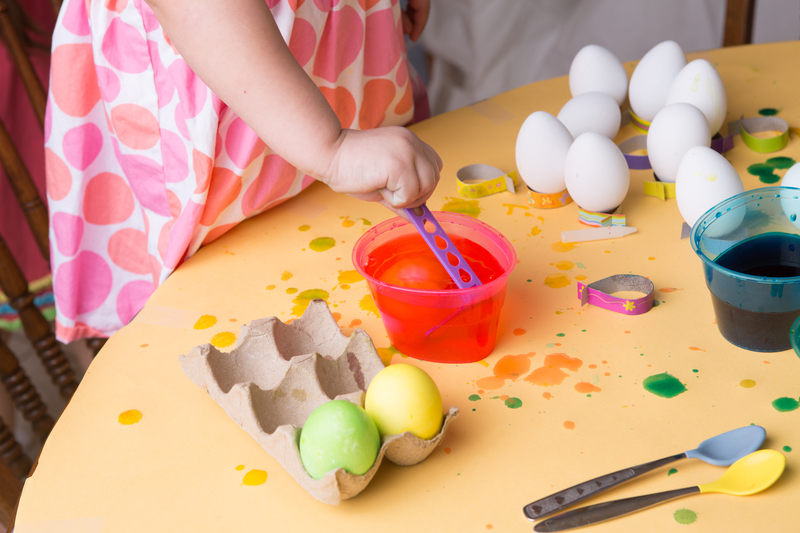Freshen Up: Goodbye to Musty Damp Smell
Posted on 25/08/2025
Freshen Up: Goodbye to Musty Damp Smell
A musty damp smell can linger in homes, offices, basements, and even clothes, turning fresh spaces into uncomfortable environments. With the right knowledge and strategies, it's possible to eliminate musty odors and prevent them from coming back. In this in-depth guide, you'll discover how to say goodbye to musty damp smells and enjoy a revitalized, pleasant atmosphere.

Understanding the Root Cause of Musty Odors
Before tackling the musty damp smell, it's essential to understand what causes it. This odor is typically created by mold, mildew, or excess moisture trapped indoors. These unpleasant smells can develop anywhere--from basements and bathrooms to closets and laundry rooms--where humidity or leaks are present.
Common Sources of Musty Smells
- Basements: Poor ventilation and ground moisture are common culprits.
- Bathrooms: Inadequate air circulation and standing water encourage mildew.
- Closets: Overcrowded spaces with little air flow trap humidity and encourage mold.
- Attics: Roof leaks and condensation on cold surfaces can foster musty odors.
- Laundry rooms: Wet clothes and spills create the perfect environment for odor buildup.
- Air conditioning and HVAC systems: When filters aren't changed, they harbor mold and bacteria.
Recognizing these locations is the first step toward a fresh and clean-smelling home.
Health Risks Associated with Musty Damp Smells
A musty odor is more than just unpleasant--it could also indicate potential health hazards. Mold and mildew spores released into the air can cause allergic reactions, respiratory issues, and asthma flare-ups, especially in children, the elderly, and those with compromised immune systems. That's why it's important not just to mask these odors, but to eliminate the musty smells at their source.
How to Eliminate Musty Damp Smell: Step by Step
Ready to freshen up your space? Here's an actionable, comprehensive plan for a musty odor-free environment.
Step 1: Find the Source of Moisture
- Check for leaks: Inspect pipes, ceilings, windows, and basement walls for signs of leaking or condensation.
- Identify hidden dampness: Use your senses--peeling paint, discoloration, warped wood, or damp spots signal trouble.
- Test for high humidity: Invest in a hygrometer to measure humidity levels. Ideally, levels should be between 30-50% indoors.
Step 2: Improve Ventilation
- Open windows and doors: This encourages cross-ventilation, allowing fresh air to flow through and remove stagnant, musty air.
- Use exhaust fans: Bathrooms, kitchens, and laundry rooms benefit from regularly used fans to banish excess moisture.
- Install vents or air bricks: In problem areas like basements or crawl spaces, vents help air circulate more freely.
Step 3: Dehumidify
- Portable dehumidifiers: These machines extract water vapor from the air and are crucial in particularly humid or damp environments.
- Whole-house systems: If moisture is a recurring issue, consider installing a full-home dehumidification system.
- Desiccants: Silica gel packets or moisture absorbers work well in closets, wardrobes, and small spaces.
Step 4: Remove Mold and Mildew
- Clean hard surfaces: Use a mixture of water and white vinegar, baking soda, or commercial mold removers to wipe affected areas.
- Launder fabrics: Wash musty-smelling curtains, cushion covers, and clothes using hot water and a bit of baking soda or white vinegar.
Tip: Add a cup of vinegar to your laundry cycle for extra deodorizing power. - Replace or discard porous items: Severely affected items, like old carpets or insulation, often harbor mold deep inside and should be replaced.
Step 5: Refresh the Air
- Activated charcoal: Place bowls in affected rooms--charcoal absorbs odors naturally and efficiently.
- Baking soda: Use as a deodorizer in refrigerators, shoes, or drawers to neutralize musty smells.
- Essential oils: A few drops of tea tree, lavender, or eucalyptus oil can freshen the air without adding harsh chemicals.
- Air purifiers: High-quality purifiers with HEPA and carbon filters remove odor particles and allergens.
How to Get Rid of Musty Smell in Specific Areas
Basements and Cellars
- Waterproof walls: Apply sealant or waterproofing paint to reduce moisture seepage. Check exterior drainage and downspouts.
- Install a sump pump: In chronically wet basements, a sump pump can remove standing water quickly.
- Store items off the floor: Use shelving to keep boxes, clothes, and books dry.
Bathrooms
- Wipe down surfaces: Quickly dry floors, tiles, and fixtures after bath or shower use.
- Replace caulk and grout: Old, cracked caulk is a breeding ground for mildew. Replace as needed.
- Use automatic air fresheners: These keep the air circulating and maintain fragrance throughout the day.
Closets and Wardrobes
- Do not overfill: Crowded spaces reduce air flow. Keep clothing loosely organized.
- Use cedar blocks or sachets: Cedar naturally absorbs moisture and deters pests.
- Ensure garments are fully dry: Never store damp clothes--they will develop a damp odor rapidly.
HVAC Systems
- Replace air filters regularly: Clogged filters trap moisture and encourage mold.
- Clean ducts and vents: Schedule professional duct cleaning if you notice persistent musty smells when the HVAC is running.
- Dehumidify air intakes: In very humid climates, consider adding a dehumidifier to your system.
How to Prevent Musty Damp Smell from Returning
Prevention is better than cure. Once you've eliminated unpleasant odors, follow these long-term strategies to keep your spaces crisp and fresh.
Keep Humidity Levels in Check
- Monitor regularly: Use a hygrometer to track indoor humidity.
- Open windows often: Even a few minutes a day can make a difference.
- Fix leaks promptly: Address drips or condensation as soon as they arise.
Maintaining a Clean Environment
- Vacuum often: Use a HEPA filter vacuum to remove dust, which traps moisture.
- Wash fabrics seasonally: Deep clean curtains, area rugs, and bedding at least once each season.
- Declutter: Fewer items mean less surface area for mold growth.
Use Natural Deodorizers
- Houseplants: Some plants (e.g., spider plant, peace lily) help purify the air.
- Baking soda dishes: Regularly refilling bowls in closets and corners neutralizes odors.
- Essential oil diffusers: These keep spaces fragrant and fresh.
Natural Remedies for Musty Smells
If you prefer non-toxic, eco-friendly solutions to combating damp musty odors, these classic methods have stood the test of time:
- White vinegar: Fights odors and mold on counters, walls, and in washing machines.
- Lemon juice: A natural antiseptic that leaves a clean, sunny scent.
- Baking soda paste: Scrub tiles and grout to remove stubborn mildew stains and smells.
- Sunlight: Airing out rugs, blankets, clothes, or shoes in direct sunshine kills bacteria and evaporates moisture.
*Remember: Strong chemical cleaners can irritate lungs or cause allergies. Patch test natural solutions and always ventilate when using them.*
Expert Tips and Tricks to Get Rid of Musty Odor Fast
- Double up on dehumidification: For a quick fix, run two dehumidifiers in a damp basement for a few days.
- Absorb shock odors with coffee grounds: Placing a bowl in musty rooms overnight absorbs strong smells.
Tip: This works for refrigerators too! - Freeze out mustiness in shoes and bags: Place unused items in a plastic bag and freeze for 24 hours--this kills odor-causing bacteria.
- Steam clean carpets and upholstery: Professional steam cleaning removes deep-set dampness and freshens the fabric instantly.
Frequently Asked Questions
Why does my house smell musty after it rains?
When outside air is humid and rainwater seeps into walls or the ground, increased indoor moisture levels allow mold and mildew to thrive. Always check for hidden leaks and dry out any areas quickly after heavy rainfall.
How long does it take to get rid of musty damp smells?
Depending on the severity and cause, most musty odors improve within a few days of following the steps above. Deep-rooted issues, such as persistent leaks or severe mold, may require a few weeks and possibly professional remediation.
Can air fresheners eliminate musty odors?
Air fresheners only mask the smell. To truly remove musty odors, address the underlying moisture and clean affected areas thoroughly.

When to Call a Professional
While most musty smells can be conquered with DIY methods, sometimes professional expertise is essential. Contact a mold remediation specialist, plumber, or HVAC technician if:
- Visible mold covers larger than 10 square feet
- You notice water pooling or structural damage
- Odor persists despite your cleaning efforts
Conclusion: Enjoy a Fresh, Must-Free Home
Bidding farewell to the musty damp smell is entirely possible when you understand its causes and tackle them with an informed, thorough approach. From ventilating and dehumidifying to scrubbing away mildew and keeping moisture at bay, every step is a stride toward a brighter, healthier living environment.
Freshen up now: implement these strategies and say goodbye to musty odors for good--your home, and your sense of well-being, will thank you!




